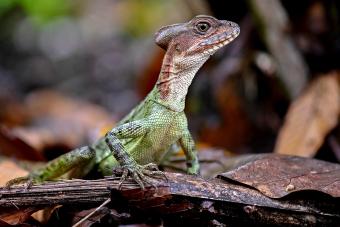
The axolotl is an amphibian, specifically a neotenic salamander, that can be found in the wild, as well as in captivity. Learn more about these interesting little critters by diving into some axolotl facts.
Axolotl Facts
The axolotl is a small salamander that can only be found in one location in the wild, otherwise it is kept in captivity.
What's Something Interesting About Axolotls?
Interesting facts about the axolotl:
- They can regenerate limbs and organs if they sustain an injury. This process may only take a few weeks.
- When regenerating limbs or organs, no scar tissue appears.
- They can live for up to 15 years.
- Despite being an amphibian, they do not experience metamorphosis and continue to live in the water upon maturity.
- Axolotls breed by spawning, and the female will lay up to 1,000 eggs at a time.
- They have fine, under-developed teeth and suck their food instead of chewing.

Do Axolotls Sleep?
Axolotls do sleep, however they do not have eyelids so you it is difficult to tell how long their resting periods are. When sleeping, the axolotl tends to hunker down and find a hidden spot to relax to avoid getting spotted by predators. They are much more active at night, as they are considered nocturnal.
Are Axolotls Friendly?
They are not particularly friendly and prefer to spend time alone. These wild critters will typically only spend time with other axolotls during mating.
Are Axolotls Immortal?
They are not immortal and live for an average of 10 to 15 years. Their lifespan may be prolonged compared to other animals who sustain injury due to their ability to regenerate organs and limbs.
Axolotl Facts for Kids
Fun facts about the axolotl:
- Their nicknames include walking fish and water dogs.
- Their predators include large birds and large fish.
- Their numbers continue to decline due to pollution and habitat destruction.
- They can be found in the wild in freshwater ponds and lakes in Mexico City.
- They can get as big as 18 inches long.

Axolotl Diet
The axolotl eats tadpoles, worms, fish, zooplankton, and insects.
Axolotl Adaptations
Axolotl adaptations include:
- Ability to breathe via lungs and gills
- Using their limbs and tail to get around more efficiently
- They have a limited ability to camouflage, which can help them hide from predators
Axolotl Eyesight
Axolotl tend to have poor eyesight and are sensitive to the light. They see much better in dim to low light.
Interesting Facts About Axolotl
The axolotl is a fascinating salamander that is not only cute, but has some incredibly unique traits.







